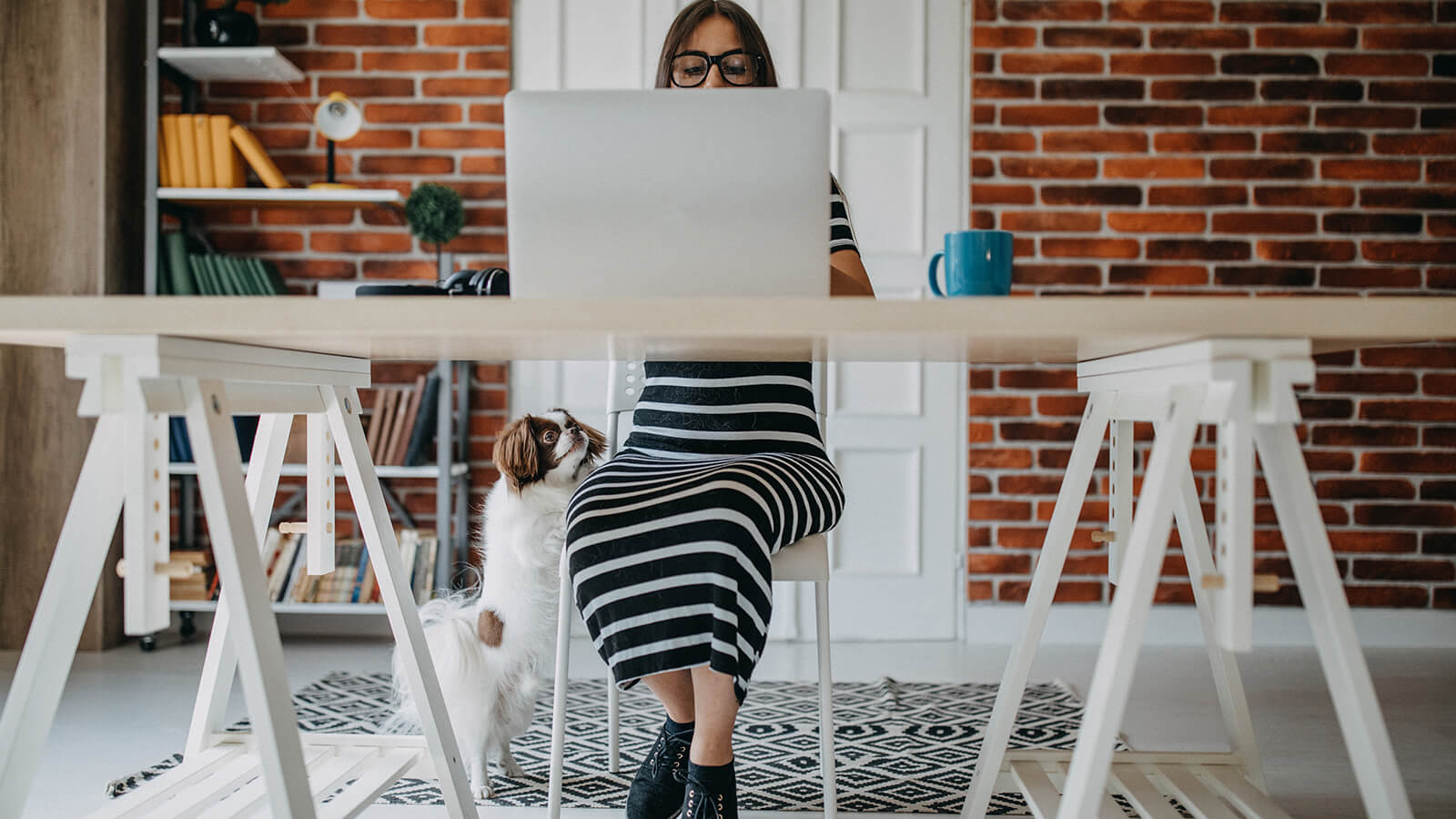
With the whole Covid-19 situation taking hold, thousands of Kiwis are now working from home. If this is not your usual MO, then we’re guessing your makeshift home office has probably never received an ergonomic assessment. So we’re on hand to offer some handy tips to help you work more comfortably and efficiently at your place.
Movement is the key
No matter how ergonomic your workstation is – and let’s face it we may be talking kitchen table here – movement is the only thing that can really combat the health and posture issues caused by bouts of prolonged sitting.
Quick tips:
-
Move every hour
Make it a habit by setting reminders/alerts. Stand up, do some stretches, grab a glass of water or make a hot drink. Better still, walk the length of your house, down to the letterbox or around the house if you have the space. Every little helps.
-
Switch it up
Sitting in the same posture for too long can increase unwanted tension or load through your muscles and joints. So switch around occasionally. Spend some time at your desk or workstation, then maybe some thinking time on the couch or standing in the living room (you can use the window as a whiteboard). Every now and then, aim to do some work standing.
-
Take walking phone calls
If possible, take your call outside and get some vitamin D from the sunshine, or pace the living room and get that step count up.
-
Take breaks
Where possible, have an active lunch-break, or morning or afternoon tea break. Take the dog or family for a walk, try a home-based workout, or go for a jog or a bike ride. As well as some fresh air, it’ll help you focus better once you get back to it.
Setting up your workstation
Movement is key, but sometimes you just can’t avoid those long hours sitting down in front of a screen. Not all of these tips may work for your situation, but hopefully you can take away a few pearls of wisdom to make your workstation a more comfortable, pain free place. Ready to give you home desk a makeover?
-
Chair
If you can, adjust your chair so your knees are about level with your hips. If this makes you feel too low for your desk, or you can’t adjust your chair, try adding a footstool to raise your knees up to your hip level. If your chair is already supportive on your back, great! If not, see if adding a small pillow to your lower back helps to make you more comfortable. It could to reduce back pain too!
-
Monitor / Laptop
Have your screen up close, no more than arm’s length away. Your eyes should also line up with the top third of your screen. That way, you’re less likely to crook your neck forward when trying to read what’s on screen.
-
Keyboard and Mouse
Keep your keyboard and mouse close to you to reduce unnecessary rounding of your
shoulders. Your wrists should remain relatively straight. If you find that your ‘at home’ equipment is making your wrists bend back too much, and this is making you feel uncomfortable, you can also try a homemade ergonomic mouse pad. Simply find a flannel or something similar, roll it up, and place it at the back of the mouse where your wrist would be. It should help to ease any wrist pain you’re feeling.
Simple stretches
Here’s one last tip to help prevent aches and pains when you’re working from home: stretches. The exercises listed are quick, can be repeated multiple times a day, and most importantly, target your most ‘at risk’ musculoskeletal pain point areas.
-
Back extensions
Sitting for most people puts more of a bend in your back, which can lead to lower back pain. So to counter this, simply do the opposite. Stand up, place your hands on the small of your back, and arch backwards. Start with 5 reps for 3 second holds. Just a stretch – this should be pain free!
-
Upper fibre trap stretches
This stretch targets the muscles in your neck that most frequently tighten up from prolonged sitting. Place your hand on your head just above your opposite ear. Let your hand gently pull your head away from your shoulder. To get a bigger stretch, anchor your other arm under a chair or under your bottom so that your shoulder is being pulled down too. Repeat on both sides twice holding for 20 seconds each time.
-
Wrist flexion stretch
